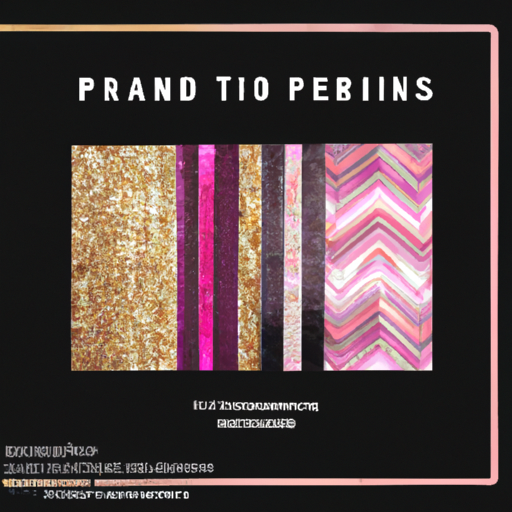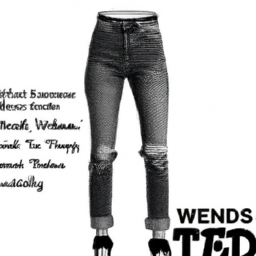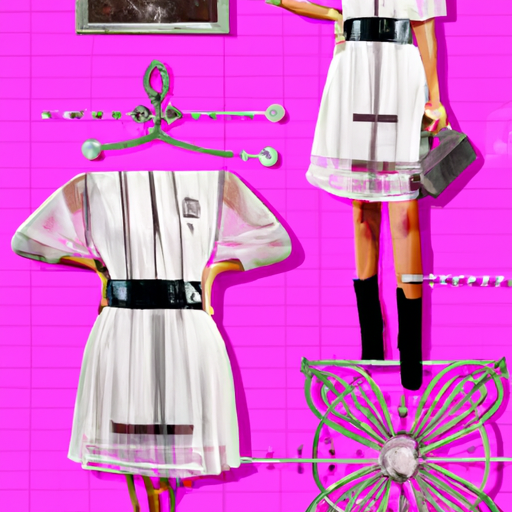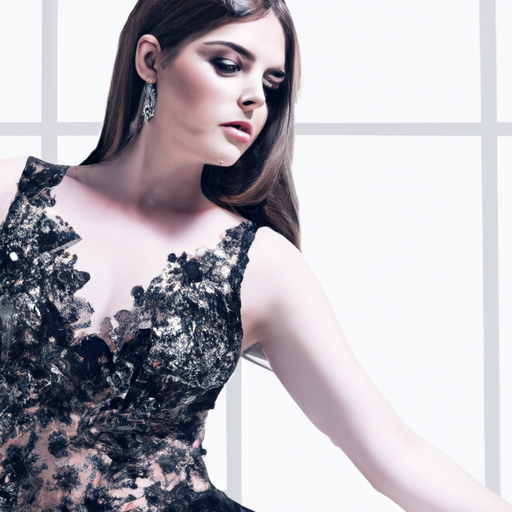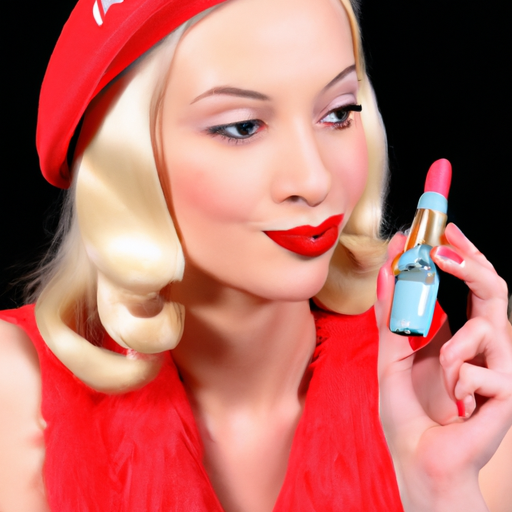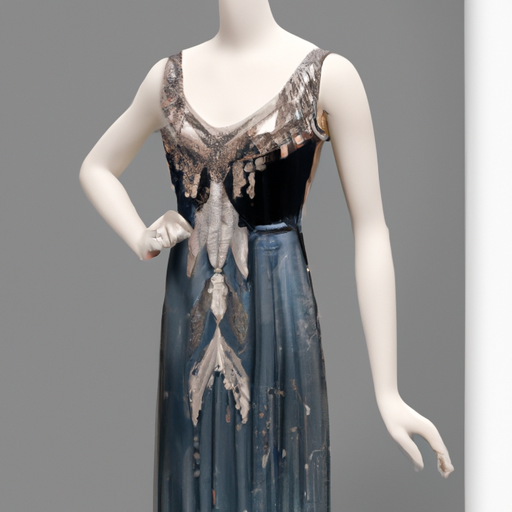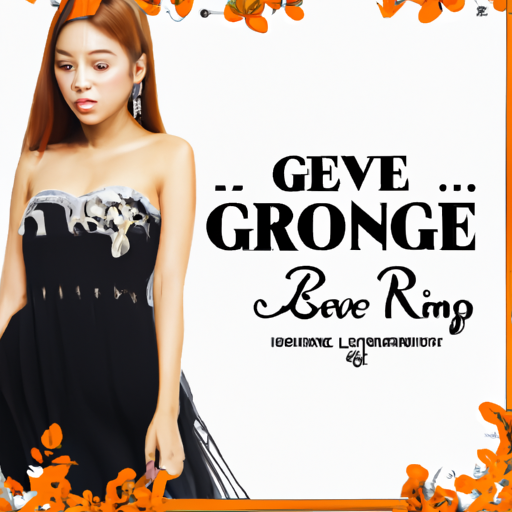Who Sets Fashion Trends?
You’re always wondering who calls the shots when it comes to fashion, aren’t you? We all are. You’re not alone in wondering who dictates what’s hot and what’s not. From the runways of Paris to the streets of Tokyo, it seems like someone out there is pulling all the strings. In this article, we’ll explore the mysterious world of fashion trends and uncover the true masters behind the style revolution. Get ready to have your fashion-forward mind blown!
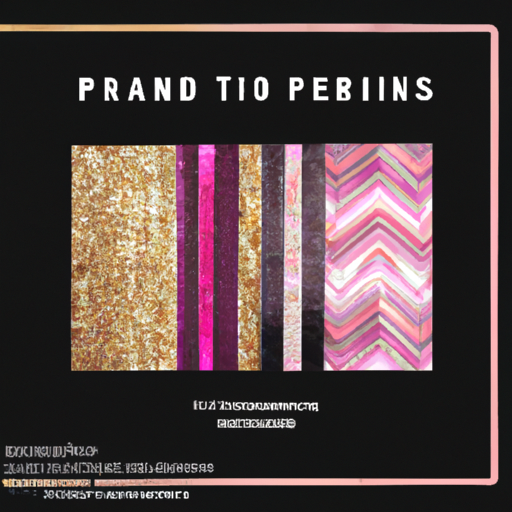
Table of Contents
Fashion Trends and Influencers
Definition of Fashion Trends
Fashion trends refer to the popular styles, designs, and clothing choices that dominate the industry during a specific period of time. They reflect the changing preferences and tastes of consumers, and are often influenced by a variety of factors such as cultural movements, historical events, and the influence of fashion leaders and influencers. Fashion trends encompass not only clothing and accessories, but also hairstyles, makeup, and overall aesthetic choices. These trends can evolve rapidly, and are constantly being influenced by different sources within the fashion industry and society as a whole.
Role of Influencers in Setting Fashion Trends
In recent years, influencers have become increasingly influential in shaping fashion trends. These individuals have gained a large following on social media platforms, such as Instagram and YouTube, and their opinions and outfit choices can greatly impact the preferences and buying decisions of their audience. By showcasing their personal style and sharing fashion tips, influencers create a sense of aspiration and trendiness that translates into the wider fashion landscape.
Types of Influencers in the Fashion Industry
In the fashion industry, influencers come in various forms, with each type playing a unique role in shaping trends. One category of influencers are fashion bloggers, who dedicate their platforms to sharing their personal style and fashion insights. These bloggers often collaborate with brands and attend fashion shows, further solidifying their credibility and influence. Another type of influencer is the celebrity, who utilizes their fame and public image to endorse specific fashion brands or set new trends. Additionally, industry professionals such as designers, stylists, and fashion editors can also be considered influencers, as their work and choices directly impact the industry and the trends that emerge.
Effectiveness of Influencer Marketing in Driving Fashion Trends
Influencer marketing has proven to be highly effective in driving fashion trends. By leveraging their large online following, influencers have the power to reach and engage with a vast audience. Their authentic and relatable content allows them to establish trust and credibility, making their recommendations and fashion choices all the more impactful. Brands have recognized this influence and have increasingly partnered with influencers to promote their products and collections. Influencer collaborations often lead to increased brand visibility, consumer engagement, and ultimately, the creation of new trends in line with the influencer’s personal style and preferences.
Fashion Weeks and Runway Shows
Introduction to Fashion Weeks
Fashion weeks are highly anticipated events in the fashion industry where designers showcase their latest collections on the runway. These week-long events take place multiple times a year in major fashion capitals around the world, providing a platform for designers to present their creative vision and set the tone for upcoming fashion trends. Fashion weeks are not only attended by industry professionals, but also attract celebrities, influencers, and fashion enthusiasts, making them a significant cultural phenomenon.
Major Fashion Weeks Around the World
Some of the most influential and highly regarded fashion weeks take place in cities such as New York, Paris, Milan, and London. New York Fashion Week, known for its innovative and commercial designs, kicks off the global fashion calendar. It is followed by London Fashion Week, which showcases emerging talent and avant-garde aesthetics. Milan Fashion Week is renowned for its luxury brands and impeccable craftsmanship, while Paris Fashion Week is held in high esteem for its haute couture shows and groundbreaking designs. Each of these fashion weeks brings together designers, buyers, and media from all corners of the globe, shaping trends through their collective creativity and influence.
Fashion Designers and Their Impact on Trends
Fashion designers play a crucial role in setting trends through their creative vision and ability to push boundaries. They are often considered the driving force behind fashion weeks and runway shows, as their collections serve as a catalyst for new trends. Designers have the power to introduce innovative designs, experiment with fabrics and silhouettes, and challenge traditional notions of style. Their influence extends beyond the runway, as their collections inspire and influence other designers, brands, and consumers, ultimately shaping the overall fashion landscape.
Fashion Shows and Their Influence on Fashion Trends
Fashion shows are an integral part of fashion weeks, providing a platform for designers to showcase their collections to a global audience. These shows not only captivate attendees with their theatrical presentations and stunning visuals, but also serve as a means to communicate the designer’s creative vision. The styling, music, and overall atmosphere of a fashion show contribute to the narrative and aesthetics of the collection, leaving a lasting impression on viewers. The trends displayed on the runway often trickle down to mass markets, as high street brands and retailers seek to emulate the designs and capture the essence of the collection.
Celebrity Influence
The Power of Celebrity Endorsements
Celebrities have long been recognized as trendsetters in fashion, as their influence reaches millions of fans around the world. Celebrity endorsements have the ability to make or break a fashion brand, with celebrities often being paid substantial amounts to wear and promote specific designs. The association between a celebrity and a brand can create a strong connection between the product and the consumer, leading to increased sales and popularity. From red carpet appearances to daily street style, celebrities have the power to influence and shape fashion trends through their personal preferences and public image.
Celebrities as Trendsetters
Celebrities have the unique ability to set new fashion trends simply by wearing a certain outfit or adopting a specific style. Their personal style choices are often dissected and emulated by fans, leading to a broader adoption of the trend. Whether it’s a designer collaboration, a statement accessory, or a specific color palette, celebrities have the power to dictate what is considered fashionable at any given time. Their influence is not limited to clothing, as hairstyles, makeup looks, and even body modifications can become trends as a result of a popular celebrity embracing them.
Red Carpet Events and Their Impact on Fashion Trends
Red carpet events, such as award ceremonies and film premieres, are highly anticipated occasions where celebrities showcase their glamorous and high-fashion outfits. These events serve as a major platform for fashion designers to garner publicity and recognition. The fashion choices made by celebrities on the red carpet often become talking points, leading to an increased interest in the showcased designs and influencing the wider fashion landscape. From iconic gowns to unique accessories, red carpet events have a significant impact on current fashion trends and play a crucial role in shaping popular culture.
Collaborations Between Celebrities and Fashion Brands
Collaborations between celebrities and fashion brands have become increasingly prevalent in recent years. These partnerships leverage the fame and influence of celebrities to create limited-edition collections or endorse specific products. By aligning themselves with a celebrity persona, brands can tap into their fan base and increase their visibility and sales. Additionally, the creative input of the celebrity in the design process adds a unique touch to the collection, making it even more sought-after. These collaborations blur the lines between fashion and celebrity culture, resulting in trendsetting collections that resonate with consumers.
Fashion Publications and Magazines
Role of Fashion Publications in Shaping Trends
Fashion publications, such as magazines and online platforms, play a crucial role in shaping and disseminating fashion trends. These publications are responsible for providing insights, coverage, and analysis of the latest fashion collections, runway shows, and industry news. They act as a bridge between designers, brands, and consumers, showcasing the latest trends and setting the tone for the upcoming season. Fashion magazines are not only influencers themselves but also serve as a platform to amplify the influence of designers, celebrities, and influencers.
Fashion Magazines as Trend Forecasters
Fashion magazines have long been considered trend forecasters, as they possess the expertise and industry access to analyze collections and predict the direction of fashion trends. They produce editorial content featuring the latest styles, highlighting key pieces and aesthetics that are likely to gain popularity. This content often inspires readers and consumers to incorporate these trends into their own personal style. Fashion magazines also collaborate with designers, celebrities, and influencers to produce innovative editorial shoots that not only showcase the latest designs but also provide creative direction and inspiration for upcoming trends.
Fashion Bloggers and Their Influence on Trends
The rise of fashion bloggers has had a significant impact on the fashion industry, as these individuals have cultivated large online followings and become credible sources of fashion inspiration. Fashion bloggers often document their personal style choices, offer styling tips, and review products, engaging with their audience on a more personal level than traditional media. Their relatability and authenticity make them influential trendsetters, as readers perceive their fashion choices as attainable and aspirational. Fashion bloggers collaborate with brands, attend fashion weeks, and provide firsthand coverage of new collections, further establishing their influence in the industry.
Editorial Shoots and Their Impact on Fashion
Editorial shoots, often produced by fashion magazines, serve as a visual representation of current and upcoming trends. These shoots combine the creative vision of photographers, stylists, and makeup artists to produce captivating images that evoke a certain aesthetic or mood. Editorial shoots not only showcase the latest designs from fashion brands but also contribute to the creation of new trends. The styling choices, unique pairings, and artistic direction of these shoots inspire readers and consumers, encouraging them to experiment with their own personal style and adopt the showcased trends.
Street Style and Influential Individuals
Street Style as a Source of Inspiration
Street style refers to the fashion choices and styles displayed by individuals on the streets, as opposed to those seen on the runway or in fashion magazines. Street style has gained increasing significance in recent years, as it represents the fashion preferences of ordinary people and captures the essence of everyday fashion. Street style has become a source of inspiration for designers, brands, and fashion enthusiasts, with the unique combinations, individual flair, and expression of personal style creating a visual tapestry of trends and innovations.
Street Fashion Photographers and Their Influence
Street fashion photographers play a crucial role in capturing and documenting street style trends. These photographers have the ability to spot emerging trends, identify influential individuals, and document the creativity and individuality of fashion choices. Their work is often published in fashion magazines and online platforms, further disseminating street style trends to a wider audience. Street fashion photographers contribute to the democratization of fashion, highlighting that trends can originate from the streets and be driven by ordinary individuals, rather than exclusively by high-end designers or celebrities.
Influential Individuals Setting Trends Through Personal Style
Influential individuals, such as fashion icons, bloggers, and musicians, have the power to set trends through their personal style choices. These individuals possess a unique sense of fashion and are often recognized for their exceptional taste and ability to curate distinct looks. Their fashion choices, whether it’s a signature accessory, a particular color palette, or a daring combination of styles, can quickly become viral trends and shape the fashion landscape. Influential individuals often have a strong presence on social media, where they share their outfits and engage with their followers, further establishing their credibility and influence in the fashion world.
Impact of Social Media on Street Style and Trends
Social media platforms, particularly Instagram, have had a transformative impact on street style and trends. Instagram users can easily share their personal style choices, inspiring and influencing others in the process. Street style trends can quickly gain traction and viral status, as users engage with and emulate the showcased looks. Fashion influencers and bloggers often leverage social media to showcase their own street style, providing a constant flow of inspiration to their followers. The accessibility and global reach of social media allow for the rapid dissemination of street style trends, making it a significant force in the fashion industry.
Fashion Brands and Designers
Role of Fashion Brands in Setting Trends
Fashion brands, ranging from high-end luxury houses to fast fashion retailers, play a pivotal role in setting trends. These brands have the capability to define and influence the fashion landscape, with their collections and marketing strategies driving consumer demand. By introducing new designs, materials, and concepts, fashion brands set the stage for emerging trends. Their ability to combine creative vision with commercial viability determines the success and sustainability of a trend. Through their brand image, marketing campaigns, and partnerships, fashion brands shape consumer preferences and create a sense of desirability around their products.
Designers as Trendsetters in the Industry
Designers are at the forefront of fashion trends, as their creativity and vision have the power to shape the industry. They draw inspiration from a variety of sources, including art, culture, history, and personal experiences, translating them into innovative designs and aesthetic choices. Designers push boundaries, challenge conventions, and introduce new concepts, often becoming trendsetters themselves. Their collections are closely observed and analyzed, as their choices in silhouettes, fabrics, and color palettes determine the direction of fashion trends. Through their influence and talent, designers inspire other fashion professionals and shape the overall aesthetic of the industry.
Fashion Houses and Their Influence on Fashion Trends
Fashion houses, particularly those with a heritage and established reputation, possess a significant influence on fashion trends. These houses have a long history of creating iconic designs and setting trends that transcend time. Their legacy serves as a reference point for contemporary designers and brands, inspiring and influencing their collections. Fashion houses often have a strong presence during fashion weeks, showcasing their heritage and craftsmanship through elaborate runway presentations. Their influence extends beyond the runway, as their designs and signatures feature in various product categories, collaborations, and brand extensions, further solidifying their impact on fashion trends.
Fashion Brands Collaborating with Influencers and Celebrities
Collaborations between fashion brands and influencers or celebrities have become increasingly prevalent, as both parties recognize the mutual benefits of such partnerships. By collaborating with influencers or celebrities, fashion brands can tap into their large following, extensive reach, and personal style to create unique collections or endorse existing products. These collaborations pique consumer interest and create a sense of exclusivity, as the designs are often limited edition or closely tied to the influencer or celebrity’s personal brand. Through these collaborations, fashion brands align themselves with influential individuals, generating buzz and setting new trends in the process.
Cultural and Historical Influences
Cultural Diversity as a Driving Force Behind Fashion Trends
Cultural diversity has a profound impact on fashion trends, as it introduces new perspectives, traditions, and aesthetics to the industry. Different cultures around the world have their own unique fashion traditions, craftsmanship techniques, and style preferences. The inclusion and celebration of diverse cultures in the fashion industry have led to the rise of inclusive and culturally influenced trends. Designers and brands draw inspiration from various cultures, infusing their collections with diverse influences that resonate with a global audience. Cultural diversity encourages experimentation, creativity, and a sense of openness within the fashion landscape, ultimately shaping trends that reflect the multifaceted nature of modern society.
Historical Events and Their Influence on Fashion
Historical events have a profound impact on fashion trends, as they shape the social, political, and cultural climate of a given time period. Societal changes and significant historical events have often been reflected in fashion choices, as designers and consumers respond to the prevailing mood and context. For example, during periods of economic downturn, fashion trends tend to be more subdued and minimalist, reflecting a desire for simplicity and functionality. Conversely, during times of cultural liberation and social movements, fashion trends often embrace experimentation, boldness, and a sense of freedom. By drawing inspiration from historical events, fashion trends mirror society’s collective consciousness, reflecting the beliefs, values, and aspirations of a particular era.
Subcultures and Their Impact on Trends
Subcultures have long been drivers of fashion trends, with their unique aesthetics and values often challenging the mainstream. Subcultures represent communities of individuals who share a particular interest, style, or ideology, and their fashion choices become a form of self-expression and identity. Subcultures have influenced fashion trends since the emergence of youth culture in the mid-20th century, with movements such as punk, grunge, and hip-hop leaving a lasting impact on fashion. These subcultures often reject conventional norms and embrace alternative and anti-establishment styles, leading to the creation of new trends that later permeate the mainstream fashion industry.
Ethical and Sustainable Fashion Movements Shaping Trends
Ethical and sustainable fashion movements have gained traction in recent years, highlighting the environmental and social impact of the fashion industry. These movements advocate for more responsible and conscious production practices, promoting transparency, fair labor conditions, and eco-friendly materials. As consumers become increasingly aware of these issues, there has been a shift towards ethically and sustainably made products. This movement has influenced fashion trends, leading to the rise of slow fashion, upcycling, and the popularity of eco-friendly fabrics. Designers and brands are now incorporating these principles into their collections, thereby reshaping the fashion industry and setting a new standard for trends that prioritize ethical and sustainable practices.
Retailers and Fashion Buyers
Retailers as Trend Forecasters
Retailers, particularly those with a large market presence and extensive consumer data, serve as trend forecasters by analyzing market trends and consumer preferences. Through data analysis, retailers can identify emerging trends, consumer demands, and purchasing patterns, which inform their buying decisions and inventory selection. By observing and predicting shifts in consumer behavior, retailers can stock their stores with products that align with upcoming trends and meet customer expectations. Retailers have a direct line of communication with consumers, allowing them to gauge the popularity of certain styles and adjust their offerings accordingly.
Fashion Buyers and Their Role in Setting Trends
Fashion buyers play a crucial role in setting trends, as they are responsible for selecting and curating the collections stocked by retailers. Buyers closely observe designers and attend fashion weeks, analyzing the collections and predicting their appeal to consumers. By understanding the market and consumer preferences, buyers use their expertise to identify designs and styles that are likely to gain popularity. Their selections influence the products that make it to store shelves, shaping the availability of certain trends and determining what consumers have access to. Fashion buyers are pivotal in driving the success and adoption of fashion trends, as their choices have a direct impact on the consumer market.
Influence of Fast Fashion Retailers on Trends
Fast fashion retailers, characterized by their ability to rapidly produce affordable, trend-driven designs, have significantly impacted the fashion industry. These retailers are known for quickly translating runway trends into affordable, mass-produced garments that are accessible to a wide range of consumers. With their fast production cycles and constant influx of new styles, fast fashion retailers have reshaped consumer expectations and contributed to the accelerated pace of fashion trends. By making current trends accessible to the mass market, fast fashion retailers have effectively democratized fashion, allowing consumers to experiment with a variety of styles and keep up with the latest trends, albeit at a lower price point.
Online Shopping and Its Impact on Fashion Trends
Online shopping has revolutionized the way consumers engage with fashion, thereby influencing trends in the process. The rise of e-commerce platforms has given consumers access to a global marketplace, allowing them to explore a wider range of brands and styles. Online shopping provides a convenient and efficient way to browse and discover new designs, encouraging consumers to experiment with their style and adopt emerging trends. Moreover, online platforms facilitate direct interaction between consumers and brands, enabling brands to gather data on consumer preferences and tailor their offerings accordingly. The ease of online shopping has accelerated the pace at which trends are adopted and disseminated, making it a significant force in the fashion industry.
Fashion Forecasting and Trend Analysis
Introduction to Fashion Forecasting
Fashion forecasting is the process of analyzing and predicting the future direction of fashion trends. It involves researching and analyzing various factors, such as consumer behavior, cultural influences, economic indicators, and industry developments, to anticipate the upcoming trends. Fashion forecasters rely on a combination of qualitative and quantitative data, trend analysis, and market research to inform their predictions. By understanding the drivers and dynamics behind fashion trends, forecasters help fashion professionals make informed decisions regarding design, production, and marketing strategies.
Research Methods Used in Trend Analysis
Fashion trend analysis relies on a variety of research methods to collect and analyze data. These methods include monitoring social media and online platforms for emerging trends, attending fashion weeks and runway shows to observe collections and styling choices, conducting consumer surveys and focus groups to gain insights into buying habits and preferences, and analyzing sales data and market reports to understand market trends and consumer behavior. By combining these research methods, trend analysts can create a comprehensive and accurate picture of the current and future trends within the fashion industry.
Trend Forecasting Agencies and Their Role
Trend forecasting agencies specialize in analyzing fashion trends and providing industry professionals with insights and predictions. These agencies employ teams of trend forecasters who are experts in understanding consumer behavior, cultural influences, and emerging market trends. They produce trend reports, mood boards, and visual presentations that outline the upcoming trends, providing fashion brands, designers, and retailers with valuable information and guidance. Trend forecasting agencies act as a bridge between the creative and business aspects of the fashion industry, helping professionals make informed decisions and stay ahead of the curve in a fast-paced and competitive industry.
Consumer Behavior and Its Influence on Fashion Trends
Consumer behavior plays a pivotal role in shaping fashion trends, as the preferences, needs, and desires of consumers drive the demand for certain styles and designs. Fashion brands and designers closely observe consumer behavior to understand their buying habits, lifestyle choices, and purchasing decisions. By analyzing consumer preferences and market trends, fashion professionals can tailor their collections to meet consumer demands, ensuring the commercial viability and success of their products. Consumer behavior, in conjunction with other factors, influences the direction and adoption of fashion trends, as trends that resonate with consumers are more likely to gain popularity and endure.
Globalization and the Digital Era
Globalization and Its Impact on Fashion Trends
Globalization has had a profound impact on the fashion industry, shaping fashion trends in unprecedented ways. With the ease of communication, travel, and trade, the fashion industry has become more interconnected and accessible. Designs, styles, and trends are shared and disseminated globally, leading to the amalgamation of various cultural influences and aesthetics. Globalization has facilitated the rise of international collaborations, allowing designers, brands, and influencers from different parts of the world to come together and create innovative collections. The cross-pollination of ideas and styles has resulted in more diverse and eclectic fashion trends, reflecting the interconnected nature of the contemporary world.
Social Media and Its Role in Setting Trends
Social media has revolutionized the fashion industry, becoming a powerful tool for setting and disseminating trends. Platforms such as Instagram, TikTok, and Pinterest allow users to share their personal style, discover new designs, and connect with a global community of fashion enthusiasts. Fashion influencers and bloggers leverage social media to showcase their outfits, provide fashion tips, and inspire their followers. Users can easily engage with and emulate the showcased looks, leading to the rapid adoption of trends. Social media platforms have democratized fashion, allowing anyone to participate in the creation and influence of trends, regardless of location or social status.
Influence of Online Communities and Forums on Trends
Online communities and forums dedicated to fashion have become instrumental in shaping trends. These platforms provide spaces for fashion enthusiasts to discuss, share, and critique various styles and designs. Online communities allow for the exchange of ideas and knowledge, enabling users to discover emerging trends, seek fashion advice, and find inspiration. These platforms have become a breeding ground for new trends, as users collaborate and influence one another’s choices. Online forums and communities offer a sense of inclusivity and community, fostering creativity and diversity within the fashion landscape.
Collaboration Between Fashion Influencers Across Borders
The digital era has facilitated collaborations between fashion influencers and brands across borders. Influencers, regardless of their geographical location, have the ability to connect with brands from around the world, showcasing and promoting their products to a global audience. This cross-border collaboration has led to the exchange of ideas, styles, and trends, as influencers bring their unique perspectives and cultural influences to their partnerships. By collaborating with influencers from different countries and cultures, brands can tap into new markets and introduce their designs to a wider audience. These collaborations contribute to the globalization of fashion trends, as different styles and aesthetics merge to create innovative and diverse collections.
